Browse Houses
Search Results: Returned 5516 records. Displaying results 5101 – 5200
| House name | Description | |
|---|---|---|
| Tanrego | In 1786 Wilson writes that Mr. Irwin's property was situated "on the right of Strandhouse Inn" and nearby was Tanrago, the seat of Mr. Dodwell. At the time of Griffith's Valuation, Capt.Richard Olpherts was occupying a house at Tanrego, barony of Tireragh. In 1894 Slater refers to Tanregoe as the seat of Richard Verschoyle. In 1906 Tanrego was the property of Richard J. Verschoyle and was valued at £25. It is still extant and occupied. |

|
| Tanzyfort | Tanzyfort House was built by the Cooper family in the mid-17th century and occupied by them until the completion of Coopershill House in 1774. Wilson, however, still refers to it as the seat of Arthur Cooper in 1786. Orser provides a detailed description of the layout of Tanzyfort House. | |
| Tarbert House | Tarbert House was owned by Robert Leslie at the time of Griffith's Valuation when it was valued at £24 10s. Both Leet in 1814 and Lewis, in 1837, note it as the seat of R. Leslie. In 1906 it was valued at £25. The National Inventory of Architectural Heritage suggests the house was built c.1720. In 1786 Wilson describes it as "happily situated on an eminence commanding an extensive view". The house has remained in the Leslie family since that time though the estate was sold to the tenants c.1904. It is open to the public during the summer months. |
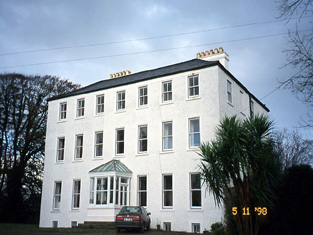
|
| Tarbert Lighthouse & Keepers House | At the time of Griffith's Valuation, Robert Leslie was leasing this property to the Board of Ordnance, when it included the lighthouse and lightkeeper's house and associated buildings, valued at £22. The lighthouse is still extant and operational. |

|
| Tavraun House | A home of the O'Grady family in the 19th century, this house is still lived in and well maintained. In 1944 the Irish Tourist Association surveyor recorded Tavraun House as a plain, two-storey house, owned by Mr Walsh. Sir Henry Doran of the Congested Districts' Board lived in the house at the beginning of the 20th century. The family vault of the O'Gradys is in Urlaur Abbey. |
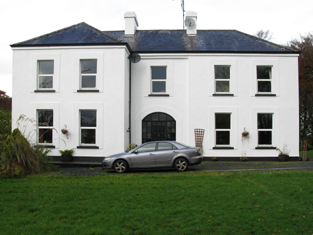
|
| Tawnahoney | At the time of Griffith's Valuation, Patrick Buchan, agent to the Creevlea Iron Works, was leasing buildings valued at £17 at Tawnahoney, barony of Dromahaire, from John Johnston. This property does not appear to be extant at the time of the 25-inch Ordnance Survey map in the 1890s. In 1786 Wilson had noted a property in the nearby townland of Gortermone as a seat of Mr. Johnston. It is not shown on the Ordnance Survey maps. | |
| Teehill Cottage | The National Inventory of Architectural Heritage dates this house circa 1820. It was built on the Barrett-Lennard estate before the nearby Ulster Canal was constructed. Valued at £10 at the time of Griffith’s Valuation it was occupied by Henry Brown who held it from Thomas Robinson. Home of Edward Scott at the beginning of the 20th century. |
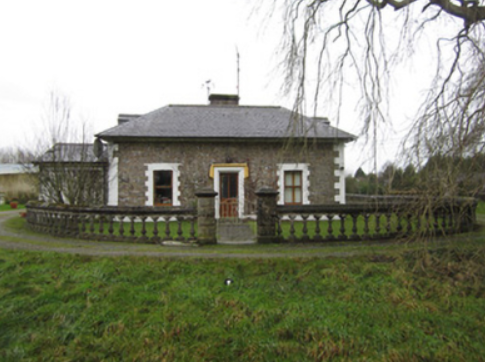
|
| Teermaclane | Home of the Woulfe family in the 18th century, it became a ruin in the early part of the 19th century. |
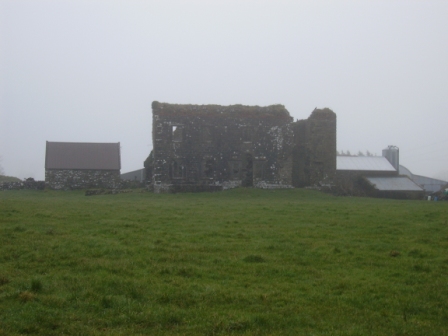
|
| Teernea | Hewitt Bridgeman, Member of Parliament for county Clare, lived here in 1837. By the time of Griffith's Valuation Myles O'Brien was leasing the house from Henry Dwyer. It was then valued at £8.10 shillings. | |
| Teeveeny House | A house valued at £14 held by Michael Cagney from Richard and Jonas Morris in the mid 19th century. His widow Johanna Cagney was still resident in the 1870s. In 1943 the Irish Tourist Association Survey reported that the house had was then occupied by the Condron family. Buildings are still extant at the site. | |
| Teevmore | A two-storey house occupied by James Stuart in 1837 and owned by Nathaniel P.Simes at the time of Griffith's Valuation but unoccupied. Substantial buildings are shown at the site on the 1st edition Ordnance Survey map but these have all but disappeared by the publication of the 25-inch edition of the 1890s. Some of the old outbuildings have been converted into a house. |
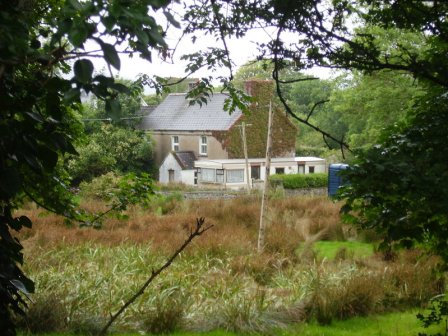
|
| Temp House | A house called Tempe was occupied by Charles O'Connor in 1814. IN the 1850s it was leased by Tobias Kelly from Catherine Mennons and valued at £13. A house is still extant at the site. | |
| Temple | This property is labelled Temple House on the 25-inch Ordnance Survey map having been built after the publicaiton of the 1st edition maps. In the 1850s William Poole was leasing the property from the Graves estate when the buildings were valued at £10. Substantial ruins still exist at the site. |

|
| Temple House | The Temple House estate extended into the Civil parishes of Cloonoghill and Emlaghfad as well as in the parish of Kilvarnet where the house is located. In 1786 Wilson refer to Temple-house as the seat of Mr. Perceval. The present house was built c.1820 but was subsequently modified. In 1894 the house was noted by Slater as the seat of Mrs. Perceval. Remains of earlier Perceval houses are to be seen in the demesne. |

|
| Temple View | The house now known as Temple View was built in the later 19th century. At the time of Griffith's Valuation there was a building at this location owned by Peter Hale and leased to George Fenton. In 1906 Temple View was the property of James Hale and was valued at £32 as well as other buildings in the townland. McTernan states that it had a succession of owners through the twentieth century but has been vacant for long periods. In 2005 it was derelict and for sale. |
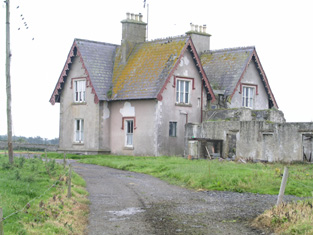
|
| Templemary | A house located on the Purcell estate, occupied by Purcell esq in the 1770s and 1780s, by John Purcell in 1814, by J. O'Leary in 1837 and by Kilner R. Woods in the early 1850s who held it from Wills George Crofts. The house was valued at £23+ at this time. The Fuges occupied the house in the late 19th century and early 20th century. The house was valued at £26 in 1906. The Irish Tourist Association survey in the 1940s described it as "a spacious three-storey house with a cellar". A new house now stands on the site. | |
| Templemore Abbey/The Priory | In 1837 Lewis refers to the Castle at Templemore being the residence of the Carden family "up to about a century ago" when it was accidentially burnt by fire. He states that more recently the Carden family had lived at the Priory, a house marked on the first edition Ordnance Survey map and valued at £96+ at the time of Griffith's Valuation. This house was rebuilt in the 1860s and was burnt in the early 1920s. The stableyard is still extant. In 1894 Slater had referred to Templemore Abbey as the seat of Sir John C. Carden. |
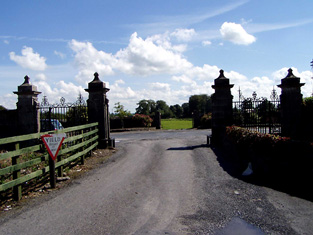
|
| Templenew House | James Thornly was leasing this property from the Conolly estate at the time of Griffith’s Valuation when it was valued at £16. It is still extant. |

|
| Templenoe | Hajba writes that this house, on the banks of the River Blackwater, was built in 1761 by the Hydes of Castle Hyde. William Hyde (died 1790) of Templenoe was the son of John Hyde of Creg Castle and grandson of Arthur Hyde of Castle Hyde. He married Catherine Lane. William Lane Hyde was resident in 1837 and at the time of Griffith's Valuation. He held the property valued at £20 from John Phipps. His estate of 584 acres was advertised for sale in July 1850. The present Templenoe House was the residence of the Mounteagles in the latter half of the 20th century. |
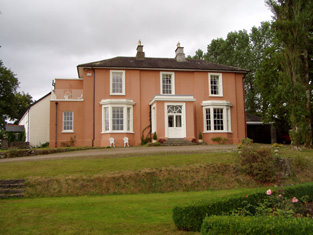
|
| Templeport House | Templeport House was built about 1860 on part of the Dobbin estate. It is situated north east of Templeport Lough and may occupy the site of a former herd’s house. Robert Roycroft of Templeport House died in 1881, aged 64 and was buried in Templeport graveyard. |
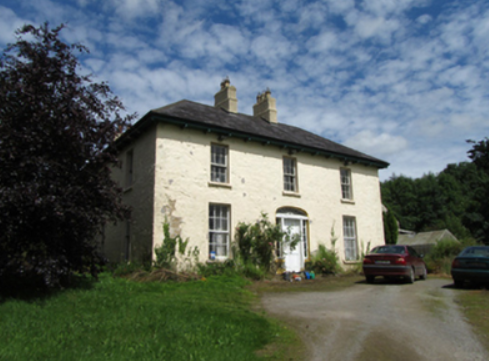
|
| Templevally | The home of the O'Mahony family in the 19th century, occupied by William O'Mahoney at the time of Griffith's Valuation, valued at £26+ and held from Cooper Penrose. Late this house was home to the Condons. The original house is demolished and a later house is now inhabited. |
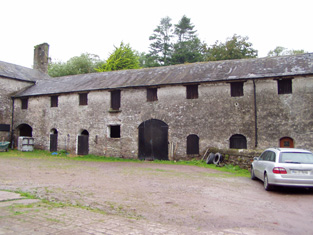
|
| Templevanny | McTernan notes that Templevanny House was commenced in 1846 but not completed until after the Famine. At the time of Griffith's Valuation, it was held by Margaret and Henry Gorman from Viscount Lorton's estate with a valuation of £2. It continued in the Gorman family until the 1920s. The building is still extant though derelict. | |
| Tenessee | This house is labelled Tenessee House on both the First and 25-inch edition Ordnance Survey map. In 1841 the Ordnance Survey Name Books suggest that it was the property of Lord Dunally. In the mid 19th century it was occupied by Thomas R. Barnes and held from Joseph Falkiner. The buildings were valued at £14. 15 shillings. The house is still in use as a residence. |

|
| Termonbeg | Charles Broderick was leasing a property valued at £10 at Termonbeg, barony of Castlereagh, from the Sandford estate at the time of Griffith's Valuation. The house is not marked on the 1st edition of the Ordnance Survey. | |
| Terramount | A mid 19th century house, home of John G. Nason in the early 1850s. Held by him in fee and valued at £24.25 shillings. The Nasons owned this property until the early 20th century. The famous race horse Dawn Run was bred at Terramount in the 1970s. |
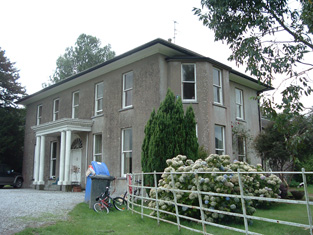
|
| Tervoe | Bence Jones writes that the house was built in 1776 by Colonel W.T. Monsell MP on the site of an earlier house. Wilson refers to it in 1786 as "the pleasant seat of W.T. Monsell". In 1894 Slater notes it as a residence of Lord Emly. A De La Poer grandson of the 1st Baron Emly succeeded to Tervoe in the 20th century and it was demolished in the 1950s. A detailed description of the interior of the house is given by the Irish Tourist Association surveyor in 1943. |

|
| The Cottage | The home of William O'Donnell in 1837 and in the early 1850s held from the representatives of Michael D. Keating. The building were valued at £18+ in the mid 19th century. Richard O'Donnell of Carrick on Suir owned 359 acres in the 1870s. | |
| The Cottage | This house is located close to Lough Sheelin and on the roadside. In the mid-19th century it was valued at £12, occupied by James Sneyd and held from Andrew Booth Bell. In 1906, the townland of Bellsgrove was in the occupation of Matthew William Webb and The Cottage had a rateable valuation of £7. It appears to be still extant. | |
| The Cottage | At the time of Griffith's Valuation, Patrick Trumple was leasing this house, in the townland of Cloonmain, parish of Killoran, from the Clonbrock estate. It is still extant and occupied. |
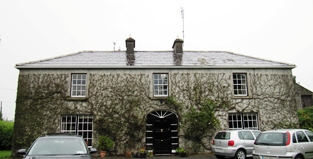
|
| The Cottage | A house built after the first Ordnance Survey. Thomas Gillman was leasing this property from George Wiseman at the time of Griffith's Valuation, when it was valued at £11 5s, It is still extant and known as Grove House. |

|
| The Cottage (Kenmare) | At the time of Griffith's Valuation, Francis Downing was a leasing a property at Mucksna, Kenmare, to Agnes Godfrey, when it was valued at £9. This may be the property which Bary refers to as Tom Moore's cottage, still extant and occupied. | |
| The Grange | The home of the Grady/O'Grady family in the 18th and 19th century. In 1786 Wilson describes it as "the beautiful and well-improved seat of Standish O'Grady". It was inherited by the Crokers in 1861. Occupied by Standish [O'] Grady in 1814 and Henry O'Grady in 1837 and at the time of Griffith's Valuation. The buildings were valued at £77 and the property was held in fee. In 1894 it was noted by Slater as the seat of Captain Edward Croker. This house was described as in very good repair even though it had not been occupied for a number of years preceding the Irish Tourist Association survey of 1942. The house is now a ruin. |

|
| The Green | At the time of Griffiths Valuation in the 1850s James Watt was leasing this property from the Stewart estate when it was valued at £50 and included a mill. It is still extant. |

|
| The Grove | At the time of Griffith’s Valuation, Mrs. John Hickson was leasing this house, valued at over £27, from Reverend Maurice Townsend. 1n 1837, Lewis describes the property as formerly belonging to the Knight of Kerry. It is most likely the property at Dingle referred to by Wilson in 1786. It is no longer extant. A new community school for Dingle has been constructed near the site. | |
| The Grove | A house on the outskirts of the town of Tuam, occupied by Mrs Cheevers in 1814 and by Patrick Kelly at the time of Griffith's Valuation, who held it from Martin S. Kirwan. Earlier, in 1786, Wilson refers to it as the seat of Martin Kirwan. The house was described in the sale rental of the early 1860s as having two large reception rooms, eight bedrooms and two water closets. Run as a hospital by the Bon Secour Sisters 1945-2001. | |
| The Grove | At the time of the first Ordnance Survey the house was described as the former residence of Captain Bourke. It became the home of James Faulkner in the late 1860s until his death in 1911. It was used as a nursing home from 1926. In 1993 it was sold and rebuilt as luxury apartments. |

|
| The Hall (Inver) | This property was held in fee by the Marquis of Conyngham’s estate at the time of Griffith’s Valuation, when it was valued at £38. Lewis records that it was occupied by a Colonel Pratt in 1837, though notes that it was a seat of the Conyngham family. The National Inventory of Architectural Heritage suggests the house was built some time in the 1750s. It is still extant. |
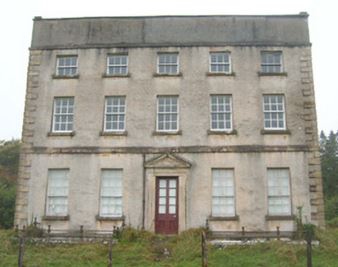
|
| The Heath | At the time of Griffith's Valuation, it was the property of Henry Blake and valued at £10. Described in 1863, when sold by the Blakes to the Tighes, as a substantial dwelling house with two reception rooms and six bedrooms, all in good repair. It is now a ruin. |
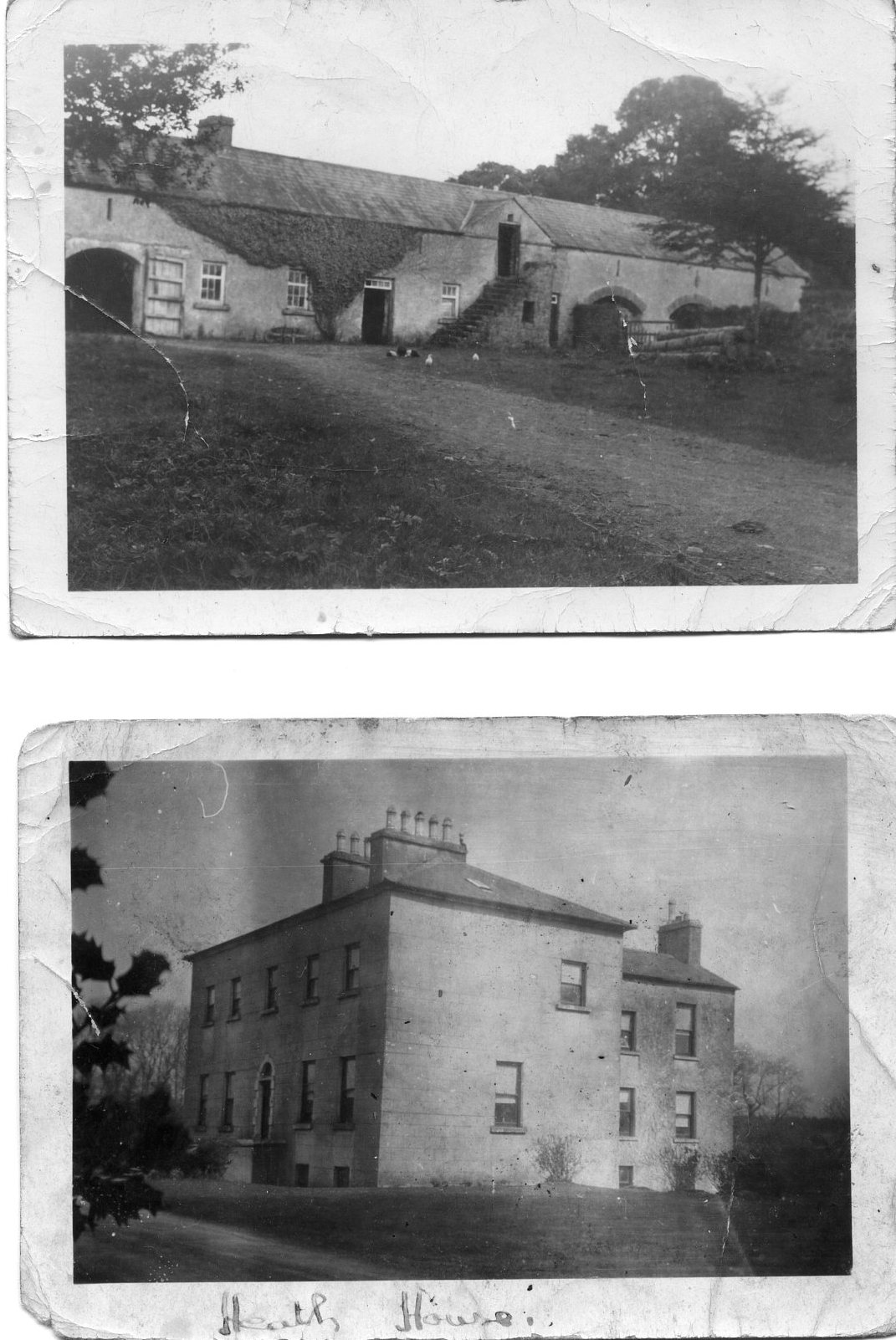
|
| The Hermitage | At the time of Griffith's Valuation, Harper Campbell was leasing a property at The Mall, Sligo, valued at £41. It had been purchased by him in the Encumbered Estates Court in 1855, having previously been the property of a member of the Wynne family. McTernan notes that it was destroyed by fire in 1976 and the site is now occupied by educational buildings. | |
| The Hermitage | The original house, named Hamlet Cottage, was beside the road and is marked on the 1838 Ordnance Survey map. A new house was later built and is labelled The Hermitage on the 25-inch Ordnance Map of the 1890s. A house is still extant at the site. |
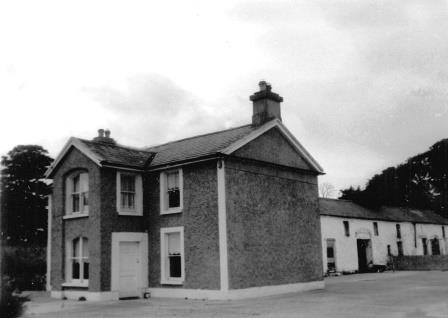
|
| The Hermitage | Hajba states that this single storey house was built by the Reverend John Bagwell Creagh before 1814. Located on the Creagh estate it was occupied by J. Norcott in 1837 and by Samuel Morton Tuckey in the early 1850s, when the buildings were valued at £15.10 shillings. Later inhabitants included William Stawell. Home of the Broderick family in the 20th century. |
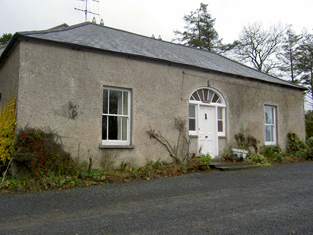
|
| The Lawn | Castlebar House was burnt in 1798. When resident in Castlebar in the 19th century the Earls of Lucan lived in the lodge known as 'The Lawn', described in the Ordnance Survey Name Books as the residence of St Clair O'Malley, who was agent to the Earls of Lucan in the 1830s. Castlebar House is referred to as the seat of the Earls of Lucan in 1894. This building is now part of a school complex. |
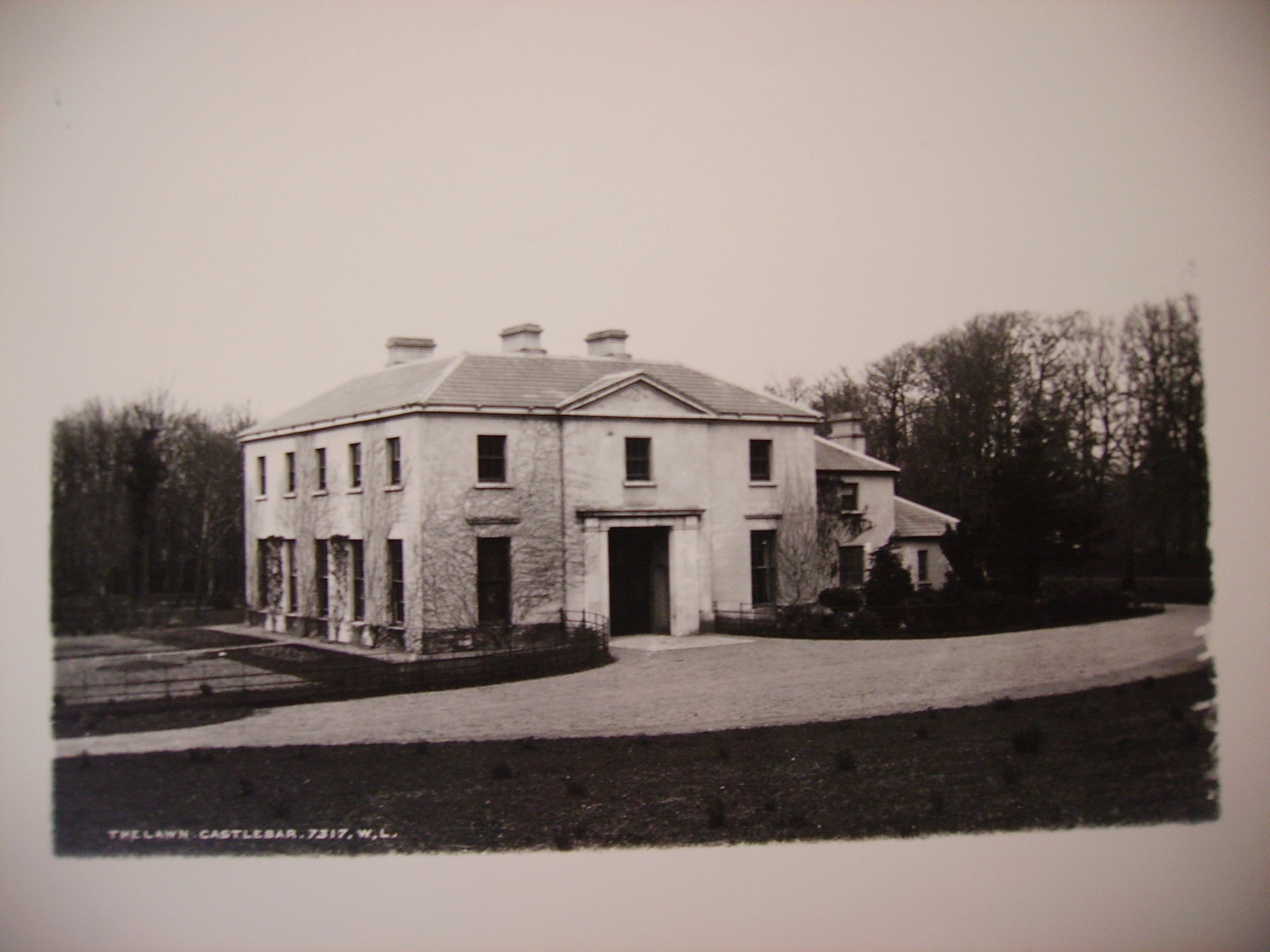
|
| The Lodge | A sporting lodge built by the Taylour family before 1800 and originally known as Cottage. It was extending circa 1820 and again circa 1860. It is situated close to Lough Ramor and on the outskirts of the town of Virginia. The Lodge was valued at £37 in the 1850s when the Earl of Bective was recorded as the occupant. By 1906, the rateable valuation had risen to £105. The building now functions as a hotel, see http://www.virginiaparklodge.com/ |

|
| The Lodge | A house with foundations dating from the 17th century, visited by Mary Delaney in the 1730s and occupied by the French in 1798. By 1837 it was the home of T. Kirkwood and, in the mid 19th century, of the Very Reverend J. Collins who held the property valued at £20 from the Ecclesiastical Commissioners. In the late 19th century this house was the home of Captain Alfred Charles Knox, a younger son of John Knox of Castlerea, Killala. Bence Jones writes that the house was enlarged circa 1820 by the addition of a bow shaped wing and that for a time it was the home of the Pery Knox Gore family. In the later 19th century the house was the home of the Timony family who owned a substantial import business in Killala. In the later 20th century owned by Lord Rathcaven and now the Irish home of Noeleen Farrell. |

|
| The Lodge (Bridgend) | Anne Scott was leasing this property from the Stewart estate at the time of Griffiths Valuation in the 1850s, when it was valued at almost £15. The property is labelled "The Cottage" on the 1st edition Ordnance Survey map but as "The Lodge" on the 25-inch map of the early twentieth century. It is still extant. |
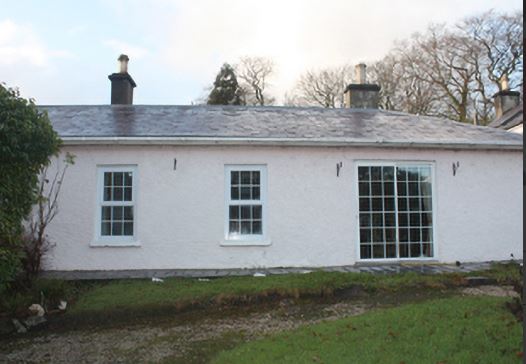
|
| The Lodge (Buncrana) | James Boyle was the occupier of this property at the time of Griffiths Valuation when it was valued at £14 and leased from Sarah McClintock. Lewis referred to it as unoccupied in 1837. It is labelled The Lodge on all editions of the Ordnance Survey maps. A house is still extant at the site. | |
| The Manor House (Dunmanway) | Noted by Lewis in 1837 as " a handsome building, erected by the late H. Cox and now the residence of his family" In 1851 occupied by Martha and Catherine Cox and valued at £18. It replaced an earlier house built by Sir Richard Cox, Lord Chancellor of Ireland, at the end of the seventeenth century. Wilson describes this earlier property in 1786 as "adorned with handsome avenues and good plantations". Later the property of the Lucas family, In 1944 the Irish Tourist Authority Survey reported that it was the residence of Mr. T. O'Sullivan. |
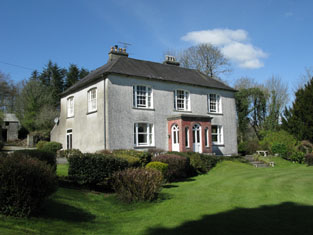
|
| The Moor | This house is labelled "The Moor" on the 1st edition Ordnance Survey map of the 1830s. Reverend William Ewing was leasing this property from the Arran estate at the time of Griffith’s Valuation in the 1850s, when it was valued at £20. On the 25-inch Ordnance Survey map the house at this site is labelled “Vicarage”. A house is still extant at the site. | |
| The Mount | Nicholas Mahon Power held this unocupied property at the time of Griffith's Valuation when it was described as a "herd's house" and valued at £10 12s. A ruined folly still exists adjacent to the site. | |
| The Neale | An early 18th century house, with a number of follies designed by Lord Charlemont. Wilson refers to it as "the superb and beautiful seat of Sir John Browne" in 1786. It was occupied by the Reverend James Cromie, brother-in-law of the 2nd Baron and his family, for most of the first half of the 19th century. The house was valued at £25 at the time of Griffith's Valuation. It was sold in the 1930s and most of the house is now demolished. |

|
| The Palace | Built as the residence of the Protestant Bishop of Elphin in 1685 from money bequeathed by Bishop Hudson. Altered in the mid 18th century and remained as the Bishop's residence until 1845. At the time of Griffith's Valuation the home of Arthur O'Conor, younger brother of Denis O'Conor of Mount Druid. Valued then at £55 and held from the Ecclesiastical Commissioners. Accidentally burnt in 1911, the main block is now demolished. | |
| The Pines (Darrigal) | Alexander Sherlock was leasing this property to Michael Nowlan in 1850 when it was valued at £13 10s. It appears to have become known as The PInes by the end of the nineteenth century. Recorded as the seat of Patrick Power by Leet in 1814. There is still a house at this site. | |
| The Priory | A house valuled at £17+ at the time of Griffith's Valuation and held by the Reverend Francis Newport from Joseph H. Bennett. The Reverend Newport's daughter married J. H. Bennett's nephew in 1865 and they eventually inherited Bennett's Court. |

|
| The Reeks or Baunclune | The McGillycuddy was in possession of the property at Whitefield at the time of Griffith’s Valuation when it was valued at £24 10s. Lewis and Leet also refer to Whitefield as a seat of The McGillycuddy in 1837 and 1814 respectively. Leet, however, also notes McGillycuddy Reeks as the address of McGillycuddy esq. In 1906 it was McGillycuddy property and valued at £24. Bary states that the house was originally known as The Reeks after the family title but that it was changed to Whitefield in the early 19th century by Richard McGillycuddy. However, on both the 1st and 25-edition Ordnance Survey maps it is labelled Baunclune. In more recent times it is known as The Reeks. This is how it is referred to by the Irish Tourist Association surveyor in the early 1940s who states that it was the the home of "Ross Kinloch, the MacGillycuddy of the Reeks and a member of Seanad Eireann". The house is still extant and occupied. |
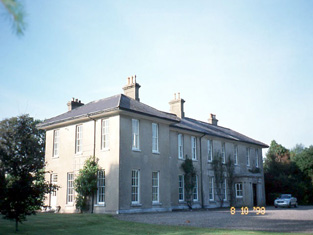
|
| The Retreat (Island) | Richard Beamish was leasing this property from Winspur Toye at the time of Griffith's Valuation, when it was valued at £20. A house is still extant at the site. | |
| The Retreat (River View House) | In 1851 Thomas K. Sullivan was leasing this property from the Devonshire estate when it had a valuation of £38. It is labeled Riverview House on the 1st-edition Ordnance Survey map but has changed to The Retreat by the 1890s. It is still extant. |

|
| The Shrubberies (Kenmare) | At the time of Griffith's Valuation, Kenmare Board of Poor Law Guardians were leasing this property from Nathaniel Irvine as an Auxiliary workhouse, when it was valued at £37. On the 1st edition Ordnance Survey map it is labelled Monastery but on the later 25-inch Map of the 1890s it appears as The Shrubberies. It is still extant. | |
| The Turret | Lewis writes that the Turret was erected by a branch of the De Lacy family and repaired by Colonel O’Dell in 1683 and was "lately the residence of Major O’Dell". The Ordnance Survey Name Books refer to an inscription on the wall of the building which recorded the O'Dell family inhabiting the building in 1683. It was reputed to incorporate a turret from an old house of the Knights Hospitallers. Thomas O'Dell was resident in 1814 and Mrs O'Dell of the Turret, Ballingarry, died in 1818 according to the church records of that parish. Fitzgerald in 1826 refers to Jackson's Turret, built on a hill and "now nearly in ruins". Bence Jones writes that a porch and wing were added to the building in the late 19th century and that it became a presbytery. Grid reference is approximate. | |
| The Vicarage (Bantry) | Rev. John Murphy was leasing the Vicarage from the Bantry estate at the time of Griffith's Valuation, when it was valued at almost £21. The house is still extant and occupied. |

|
| The Warren | Caleb Robertson is recorded as the lessor of a property in the townland of Warren or Drum at the time of Griffith's Valuation. It was valued at £25 and leased to a Captain Butler. A house at this site is labelled The Warren on the 25-inch map of the 1890s and a house still exists there. | |
| Thomastown | Thomastown was originally leased by Christopher Bowen to Francis Lambert in 1777. It was the residence of Thomas Valentine Clendining in the first half of the 19th century. The unoccupied house was held by Charles G. Mahon at the time of Griffith's Valuation when it was valued at £30. Some buildings survive at the site. | |
| Thomastown | At the time of Griffith's Valuation, Thomastown House, barony of Clare, was occupied by James Clarke and valued at over £10. The National Inventory of Architectural Heritage indicates that this is a two-phase house, the original part dating from the early eighteenth century. It is still extant and occupied. |
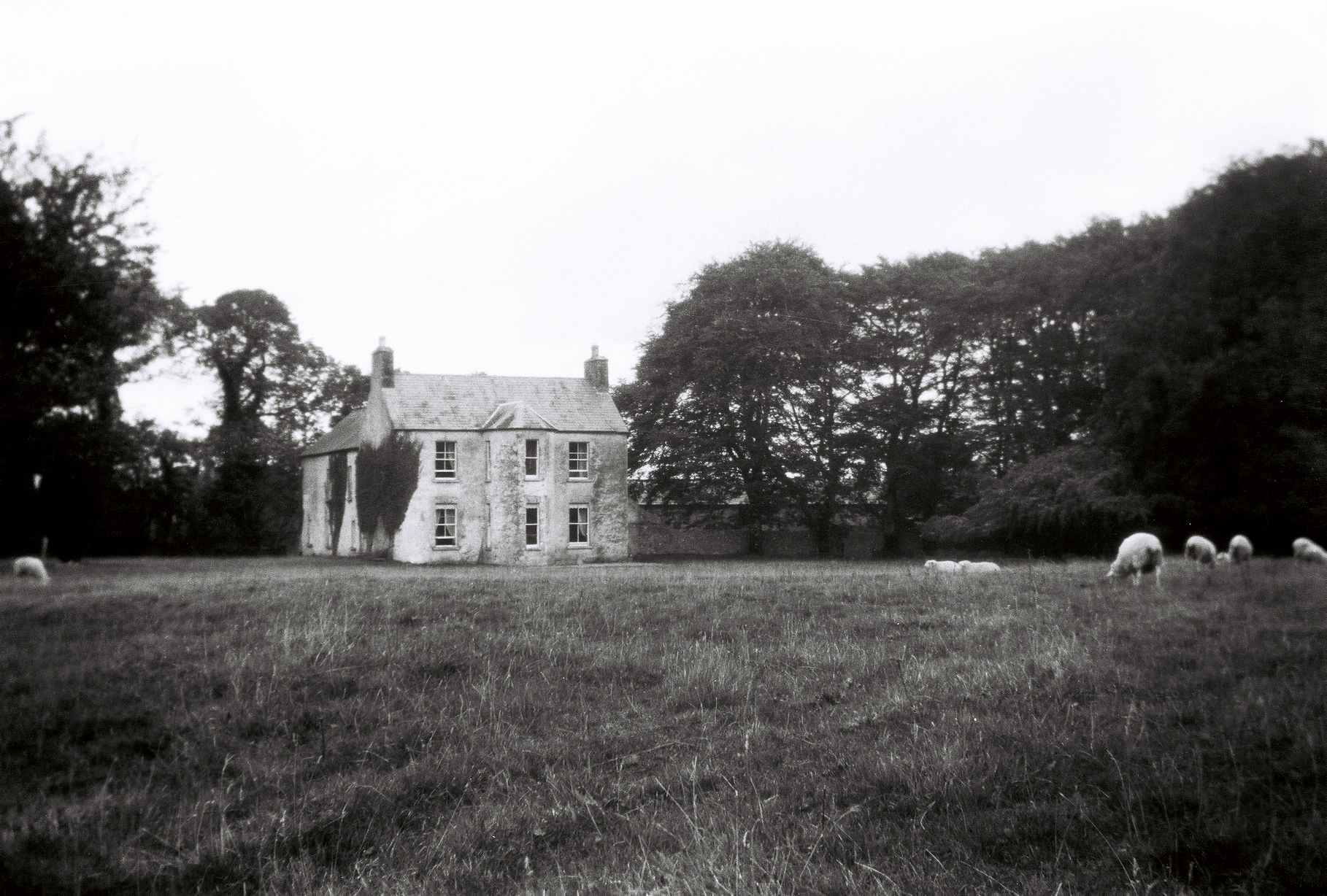
|
| Thomastown Castle | The original building was a two storey house of pink brick built in the 1670s by George Mathew with early 18th additions. Wilson decribed it in 1786 as "an ancient but handsome edifice". In the second decade of the 19th century it was enlarged and transformed into a Gothic castle, designed by Richard Morrison for the 2nd Earl of Llandaff. Viscount Chabot is recorded as the occupier in the mid 19th century. He held the property in fee and the buildings were valued at £100. Bence Jones writes that it later was in the possession of the Daly family but from the mid 1870s it began to decay. William Daly was the occupier in 1906 when the buildings were valued at £61. |
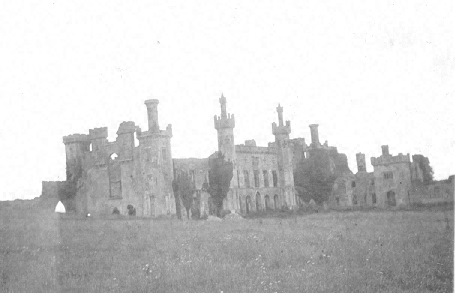
|
| Thomastown Park | Built in the 18th century and home of the Naghten family for over 200 years, valued at £35 in the 1850s. Wilson refers to it as the seat of Mr. Naghten in 1786. In 1894 Slater mentions Thomastown park as the seat of Mrs. Naghten. It is no longer extant. | |
| Thornberry House | Originally a Brew family home, then a rectory and by the mid 19th century in the possession of the Studdert family held from Jane Robinson. Later the home of Colonel Thomas Lloyd. The house was demolished in 1949. | |
| Thornfield | Leet records Thorn-field as the residence of Thomas Thornley in 1814. By the mid 19th century it was the residence of Sir Richard Bourke held by him in fee and valued at £25. The Ordnance Survey Field Name Book refers to Sir Richard Bourke repairing the house circa 1840. It was 2 storeys high, 60x50 feet. This house has remained in the possession of Sir Richard's descendants into the 21st century. |

|
| Thornfield | Slater refers to Thornfield as the seat of John Davis in 1846. In 1856 Thomas Galbraith was leasing a property valued at £7 in the townland of Thornfield, parish of Lickmolassy, barony of Longford, from the Clanricarde estate. It is no longer extant. | |
| Thornfield | Occupied by John Mahon at the time of Griffith's Valuation and held from the Kellys. The sales rental of 1863 includes a lithograph of Thornfield which was sold privately to Christopher Bagot. It continued to be occupied by the Mahon family until 1917, when it was taken over by the Land Commission, Henry English inhabited the house until the 1950s. This house on the Galway/Roscommon border now appears to be a ruin, with a substantial garden wall still intact. |

|
| Thornford | This house located on the estate of the Marquess of Bath was associated with the nearby mill complex. Hamilton McMath was the proprietor in the mid-19th century, when the house was valued at £26 and the mill buildings (corn and flax) at £60. Buildings are still extant at this site. |
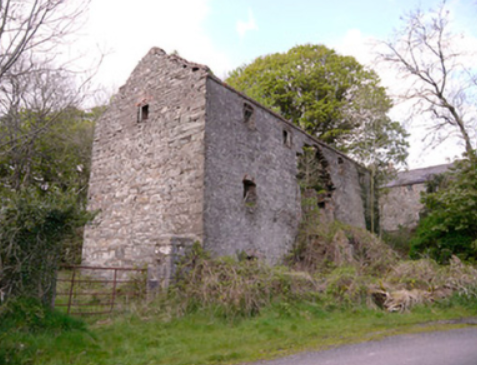
|
| Thornhill | ||
| Thornhill | Home of Charles Burke Jordan in the 19th century. At the time of Griffith's Valuation, he was leasing this property to James Jordan when it was valued at £5. The building labelled Thornhill on the 1st edition Ordnance Survey map is not the same as that on the later 25-inch edition published in the 1890s. The latter is no longer extant but some buildings remain at the original site. | |
| Thornhill | A Nason home, first occupied by John William Washington Nason. His widow Mrs Barbara Nason is recorded as resident at the time of Griffith's Valuation. Valued at £18.11 shillings the house was held from the Duke of Devonshire. The Nason family continued to live here until the mid 20th century. The house is still an occupied residence. | |
| Thornhill (Ballinacarrow) | At the time of Griffith's Valuation, Charles Gilbert was leasing a house and bleach mill at Ballinacarrow North, from the Hall Dare (earlier and later the Perceval) Estate. The combined valuation of the buildings was over £21. McTernan states that this is Thornhill House and mills. The mills had ceased to operate in the early twentieth century but the house is still extant. | |
| Thornhill (Drumsnat) | John Johnston is described in the Ordnance Survey Field Name Book as the only gentleman resident in the parish. He lived at Thornhill. On 13 June June 1854, this house and a demesne of about 40 acres was for sale in the Encumbered Estates Court. The owners and petitioners were Mary Johnson, widow, Maria and Jane Johnson and Martha Dudgeon, formerly Johnson. The property was held under a lease (1738) for 999 years. By the time of Griffith’s Valuation Robert Thomson was the occupant holding the property from Owen B. Cole & Olivia Lucas. The buildings were valued at £25. Home of Felix P. Smith and family in 1911. |

|
| Thornhill House | Wilson, writing in 1786, refers to Thornhill as the seat of Mr. Townsend. Two prooerties are shown in the townland of Derreendangan on the 1st edition Ordnance Survey map of the 1830s. One, Thornhill House, is described as "in ruins" while the other property, Thornhill Cottage, is located nearby. The townland was part of the estate of Thomas Uniacke at the time of Griffith's Valuation. The 25-inch map of the 1890s indicates Thornhill House again in use and there is a still a substantial farm at this site. Thornhill Cottage is no longer extant. | |
| Thornpark | At the time of Griffith's Valuation the property at Carrowmoneash, parish of Oranmore, was leased by the representatives of H. Butler to Anne Butler/K.H. Blake. Burke's Landed Gentry (1958) states that Xaverius Henry Blake Butler purchased Thornpark, part of his mother's dowry, in the Landed Estates' Court in April 1860. Sir Henry Blackall states that Xaverius Blake Butler bought Mount Vernon, which he renamed Thornpark, from his nephew Henry.By 1906 the house at Carrowmoneash was owned by James Blake Butler and was valued at £26. Thornpark House is now the Oranmore Lodge Hotel. See www.oranmorelodge.ie for more information. |

|
| Thornville Lodge | O'Connell states that this house was built by the Bricknell or Bucknell family in the later 18th century. It was later occupied by the Bishop of Kilmacduagh, Dr. Ffrench. Kinvara parish records also indicate that Arthur and Clare Ireland lived here in the 1830s. This may be the same Arthur Ireland who held the post of Burser at Queen's College, Galway in the 1850s. The house is still extant. | |
| Tiaquin | At the time of the Burke sale in 1851 the house was described as an 'old fashioned cottage style' type of building. A gable end of the house still stands with the nearby farm buildings still in use. |

|
| Ticooly/Tycooly | Occupied by the O'Kellys in the 18th and early 19th centuries. By the time of Griffith's Valuation it was part of the Clonbrock estate and was valued at £16. A building on a slightly different site, is noted as Tycooly House on the 25-inch Ordnance map of the 1890s. There is still an extant property at this site. |
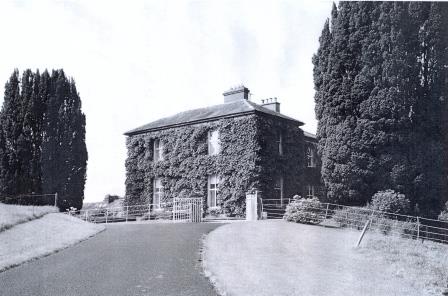
|
| Tieraclea Lodge | At the time of Griffith's Valuation, Tieraclea was occupied by Stephen Collis, when it was valued at £42. An extensive farmyard is recorded here on the First Edition Ordnance Survey map. The house is labelled as Tieraclea on the later 25-inch map and by 1906 Tieraclea was valued at £45. Bary writes that it had been a residence of the Collis family since the eighteenth century and they continued there until the 1920s. In the early years of the twentieth century the house was destroyed by fire but was re-built and is still extant. | |
| Tiermoyle House | In 1786 Wilson refers to Tiermoyle as the seat of Mr. Crawford. In 1840 the Ordnance Survey Name books refers toTiermoyle as a residence of Cooper Crawford and "about 20 years ago it was then a place of some account but it is now in a state of dilapidation". By the time of Griffith's Valuation, this house was occupied by Mrs. Costelloe, leasing from Countess Norbury's estate and valued at almost £4. A farm is still extant at the site. | |
| Tikincor Castle | Tickincor Castle, a fortified house, is described as "in ruins" on the first edition Ordnance Survey map in 1840. Buildings at the site were valued at £7 18s at the time of Griffith's Valuation in the 1850s when they were owned by Ralph B. Osborne and leased to Thomas Prendergast. In 1777 Smith notes that Tickencore was the property of Sir William Osborne. |

|
| Timoleague House | In 1837 Lewis refers to Timoleague House as the seat of G. Travers. At the time of Griffith's Valuation, it was held in fee by Robert Travers and valued at £21. This house was burnt in December 1920 along with the ancient castle nearby. The Travers family built another house close by which is still extant and occupied. |
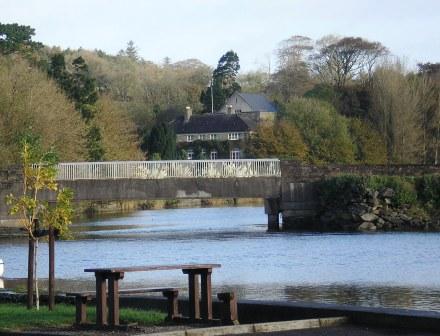
|
| Timoney Park | This house was the seat of the Hutchinson family in the 19th century. Lewis refers to the great improvements made by J.D. Hutchinson at Timoney. By the mid 19th century the house was valued at £51 and was held in fee. It was occupied by Standish Grady J. Hutchinson in 1906. It is now a roofless ruin. |

|
| Tincurry House | Abraham Jackson was residing at Tincurry in 1814. The Ordnance Survey Name Books refer to Tincurry as the residence of Stephen Moore in 1840. The building appears to have been in use as a workhouse at the time of Griffith's Valuation. In 1906 Wiliam Jackson Pigott was resident at Tincurry in a house valued at £23+. The National Inventory of Architectural Heritage states that the present house was built in 1932 on the same site as the original house which was blown up by British Forces in 1921. |

|
| Tinerana | The Purdon family, originally from Cumberland, held this property on the shore of Lough Derg from the mid 17th century. In the ownership of Simon George Purdon at the time of Griffith's Valuation when the buildings were valued at £30. The Irish Tourist Association Survey File of the 1940s states that the house was built "about 70 years ago", contains about 60 rooms and the original residence of the Purdons stands adjacent to the new house. The estate was sold to the Gleeson family who owned the Athlone Woollen Mills in 1901 and the house later became the property of Dr Carmody who opened a health centre. The property was offered for sale in 2012. |
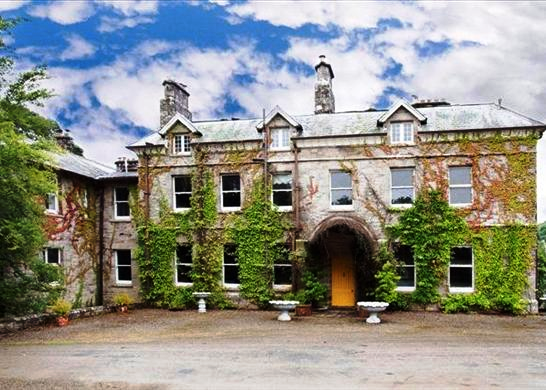
|
| Tinnascart House | In 1851 this property was leased by Robert Dower from William C. Poole when it was valued at £14 10s.The 1874 Dower estate sale notice indicates that the house had been built within the previous 15 years at a cost of £2000. It is labelled as Tinnascart House on the 25-inch Ordnance Survey map of the later nineteenth century. The location is now a racehorse training enterprise. | |
| Tinny Park | Occupied by T.T. Byrne in 1837 and held in fee by Hugh Burns in the mid 1850s when it was valued at £11. It is still extant. It was offered for sale in 2016 and again in 2022. |
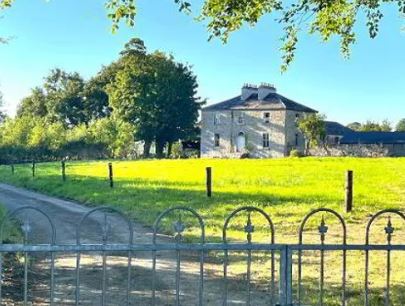
|
| Tintrim | Up to 1898 this house was in the barony of Leitrim, county Galway. It is now in the barony of Tulla Upper, county Clare. At the time of Griffith's Valuation, John A. Burke was occuping the house valued at £11, at Tintrim, parish of Clonrush, barony of Leitrim, county Galway. Weir states that the house at Tintrim was probably built by John Anthony Burke of Clondegoff Castle nearby. He was most likely a member of the Burke family who lived at Meelick House, Whitegate at the same time. Tintrim continued in the possession of the Burke family as John Anthony Burke moved out to allow his son, Edmund, and his family to live there until the house was sold in 1867. The house later passed to the Madden family and is still extant and occupied. The Irish Tourist Association file records state that John A. Burke died in 1857 though the family history suggests he died in 1863. The Tourist Association file also notes that in 1933 there was a search for the heirs of his reputed son, Martin Edward Burke, in Australia. |

|
| Tinvane | This house was the home of the Briscoe family in the 19th century. In 1841 The Ordnance Survey Name Books described it as "handsomely situated...having plantations, gardens, orchard and ornamental grounds". Henry Briscoe was the occupier at the time of Griffith's Valuation when the buildings were valued at £26 and in the 1870s Henry W. Briscoe of Tinvane owned 127 acres. The property was held from the Earl of Bessborough. Now function as a guest house known as Cedarfield House. For an older image of this house, see http://www.waterfordcountyimages.org/exhibit/web/DisplayWAIImage/K0fV5VPbSPSwE/ |

|
| Tiraloughan | In 1906 Lord Gough owned a property valued at almost £4 at Tiraloughin, parish of Beagh as well as over 100 acres of untenanted land. A house still exists at this location. | |
| Tircahan Lodge | Francis Hassard of Tircahan Lodge, also known as Rockwood, is recorded in a sale rental of the Encumbered Estates Court in 1852. He sold part of his estate to Robert Hutton. In the mid-19th century Tircahan Lodge, a building named on the first edition six inch Ordnance Survey map (publ. 1837), was occupied by Henry Breen, who held the house, valued at £8, from Robert Hutton. It is located south of Swanlinbar. In the 1890s the original lodge was replaced by a larger more compact building which still stands today although now derelict. Robert Hutton JP lived here with his family in the early 20th century. In 1906, Georgina Hutton was recorded as the occupier when the 'mansion' house was valued at £17 for rates. | |
| Tirkeenan House | This house is named on the 1st edition 6 inch Ordnance Survey map (1836). It was located on the Rossmore estate and very close to the town of Monaghan. It was occupied by John M’Dowell circa 1860 when the buildings were valued at £32. A third storey was added to this house in the 20th century. |

|
| Tirnaleague House | At the time of Griffiths Valuation n the 1850s, Samuel Rankin was leasing this property from the Lord Bishop of Derry’s estate when it was valued at £15. By 1906 it had the same valuation but was in the ownership of John C. McClintock. The National Inventory of Architectural Heritage suggests it was built by the Cary family but passed to the Rankins through marriage. It is still extant, surrounded by modern housing development. |
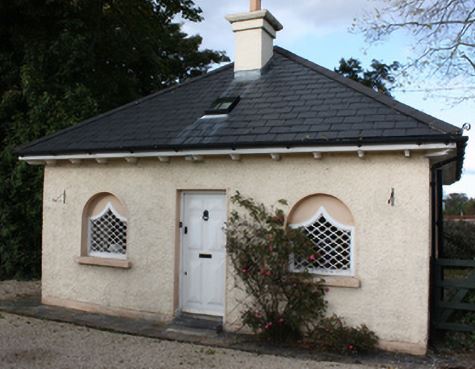
|
| Tirnaleague House | In the 1860s, Samuel Rankin was leasing this property from the Lord Bishop of Derry’s estate at the time of Griffith’s Valuation, when it was valued at £15. It is sill extant, now surrounded by modern housing development. |
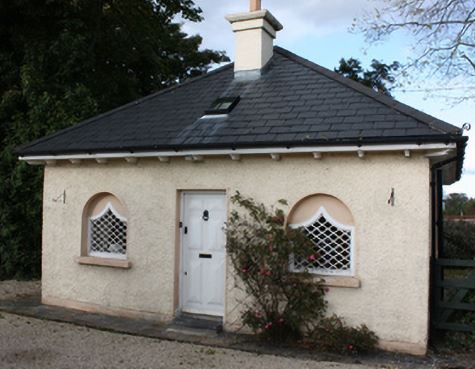
|
| Tivoli | Marked on the first Ordnance Survey map, Tivoli Cottage valued at £48 was occupied by Major Wheeler and held from Sir Matthew Barrington at the time of Griffith's Valuation. Since 1952 it has been the centre of a boys' secondary school known as Villiers School. |

|
| Tivoli (Cappoquin) | Tivoli was being leased by Henry Dennehy from the Keane estate at the time of Griffith's Valuation, when it was valued at £17. It was included in the sale of Dennehy's estate in the Encumbered Estates Court in 1857 when it was in the owner's possession. The house is still extant and occupied. |

|
| Toanreagh | This house seems to have been constructed after the publication of the 1st edition Ordnance Survey Map but it appears on the 25-inch edition of the 1890s. Richard Oliver was leasing this property to Francis Creagh at the time of Griffith's Valuation, when it was valued at £9 10s. A house and substantial farm are still extant at the site. | |
| Tobercurry | John Brett was leasing a house in the town of Tobercurry to the value of £17 from the Irwin estate at the time of Griffith's Valuation. Much development has taken place in the vicinity since then. | |
| Tobermaing House | Robert Chambers was leasing a property which included a mill to James Chambers at the time of Griffith's Valuation, when it was valued at £26 15s. In the 1830s the Ordnance Survey Field Name Books record Lady Franks as the proprietor of this townland and William Bailey as resident in the house. Bary states that the mill was run by the Bailey family and that the property was later owned by the Roche family. In the 1990s it had been converted into a bar and restaurant. |

